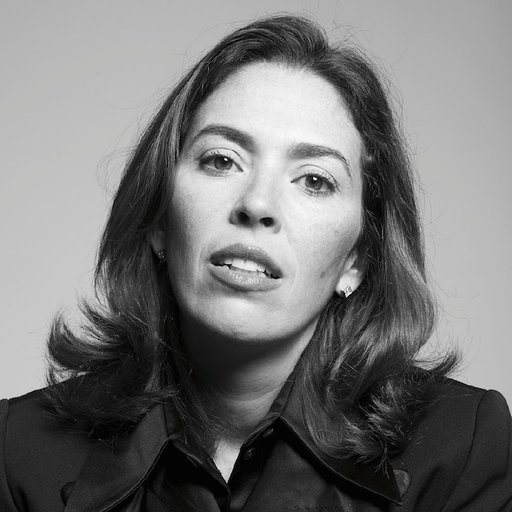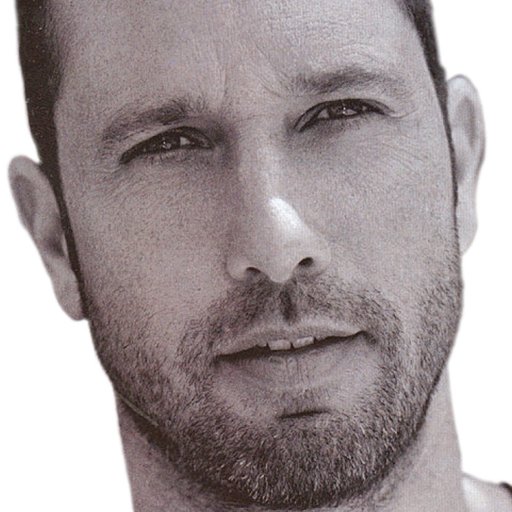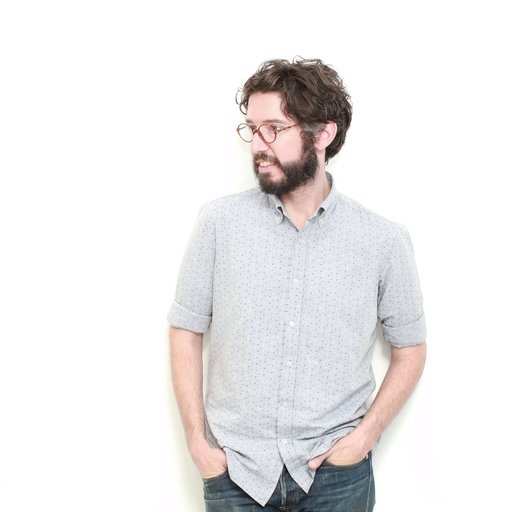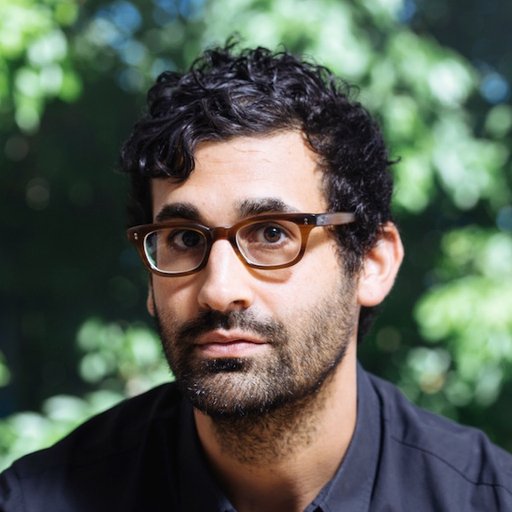After spending more than a decade at the Whitney, where she co-curated two Biennials, Shamim M. Momin could have had her pick of museum jobs. Instead, she set out for the West Coast, where she founded the nonprofit public arts organization Los Angeles Nomadic Division (LAND). Tapping into the city's anarchic, artist-driven energies, LAND has realized ambitious projects including a Eugenia Butler retrospective for the Getty’s Pacific Standard Time initiative in 2009, the one-day outdoor art show the island at Art Basel Miami Beach 2010, and the ongoing, transcontinental Billboard Project along the U.S. interstates. Recently, the organization teamed up with Artspace to produce an exclusive benefit edition with Mexican artist Jose Dávila. We caught up with the fast-moving curator on one of her visits to the East Coast.
To start off, could you explain the mission of LAND?
LAND is a public art initiative. We believe that the public deserves the right to experience innovative and thoughtful contemporary art in their day-to-day existence, something more or different than in a museum or gallery context. We also believe that artists deserve the opportunity to realize projects and ideas that might not make sense in a museum or gallery. All of our projects are commissioned. We’re based in L.A. and, as we’re only five years old, the majority of our projects have been in L.A., although we are working nationally and eventually internationally as we grow.
The “nomadic” aspect of it speaks to the fact that we have no one brick-and-mortar space in which we do exhibitions on an ongoing basis. Every time we do something it’s a new venue and project altogether. It’s a challenge in that everything is essentially a collaboration with a new venue, a new audience.
How did it get started?
Obviously there are amazing public arts organizations with similar ideas in New York, like Creative Time and the Public Art Fund. When I started going out to L.A. for research for the Whitney Biennial that I co-curated in 2008, I realized that there wasn’t even a single organization in the city that was dedicated to public art. The artists were really doing these things on their own.
One of the great things about L.A. is that the art scene is pretty much run by the schools. There are so many art schools here, and the artists who come from them retain their relationships and communities. They’re self-fulfilling the things they want to do, and it’s possible to do that in L.A. You can just randomly occupy the empty corner store and no one is going to fuck with you too much. It’s not like New York, entrenched in all the rules of what you can and can’t do. If you have an idea, you get your friends together and you figure it out. You don’t wait for a curator to come around and put you in a show—you just have the show yourselves. This idea of just doing things ad-hoc and having shows in weird places was already very pervasive here, and it struck me as interesting that LAND could provide another level to this way of working.
LAND really burst onto the L.A. scene with your participation in the Getty’s Pacific Standard Time initiative in 2011. What was that like?
The first round of Pacific Standard Time focused on art in Southern California from 1945 to 1980—a kind of interim period that isn’t so much in the books but where a lot was still happening. The narrative at the time was very heavily focused on the East Coast and Europe, so this was a gesture to start filling those gaps by doing 50 to 60 different exhibitions throughout the entire area, stretching from Santa Barbara to the north and down to San Diego.
All kinds of museums, organizations, and cultural institutions participated. It was a pretty unprecedented endeavor in general, let alone in Los Angeles. I don’t think any other city has done something quite like that. We contributed a show about Eugenia Butler, who was a relatively unknown but extremely important gallerist at the time who basically fostered all of the Conceptualists—she gave John Baldessari his first show, she presented Dieter Roth’s Staple Chase (A Race) piece that everyone learns about in art history but never remembers where it was, and so many more. That was an amazing experience—we worked with her granddaughter and a private collection, and it was done in a strip mall in Santa Monica.
What is LAND working on now?
We are currently doing a giant cross-country billboard project called “The Manifest Destiny Billboard Project.” The easiest way to think about it is in tens—it’s all across interstate-10s, ten artists, and each gets ten billboards. It’s ten chapters as they unroll consecutively, ending in Los Angeles in June. That’s been a two year project, one of our most ambitious to date.
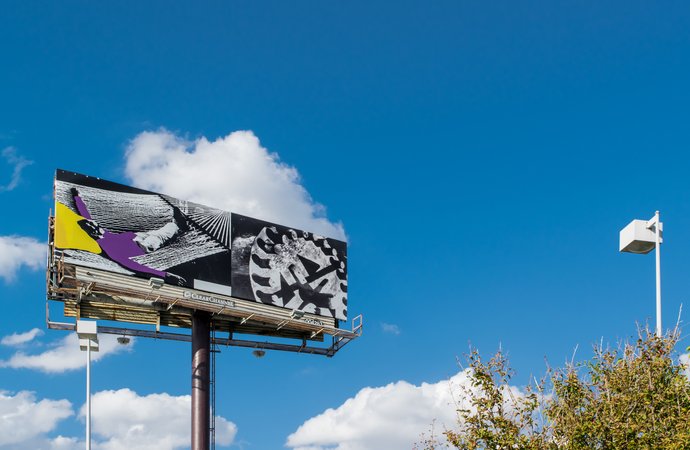 John Baldessari, Love and Work, 10 billboards, San Antonio, TX, 2014. A LAND Exhibition: The Manifest Destiny Billboard Project. Photo courtesy of Jennifer Siu-Rivera.
John Baldessari, Love and Work, 10 billboards, San Antonio, TX, 2014. A LAND Exhibition: The Manifest Destiny Billboard Project. Photo courtesy of Jennifer Siu-Rivera.
What’s in store for the finale, when the project returns to L.A.?
We want to do a long weekend—a citywide exhibition of sorts, bringing in as many artists as are able to come and doing a whole host of activities and events meant to recollect all of the ideas from this two year process. We really want to bring it together through some conversation and dialogue, panels and/or lectures and talks as well as installations and screenings. Like everything else that we do, it’s all free and open to the public. We want it to be in multiple parts of the city so that different audiences can access it in different ways.
We’re giving the artists open space to talk about it, because one of the interesting things with every commissioned project is that the artists that went earlier are thinking about those who went later, and maybe they’ve already evolved that earlier work into something else. This is an opportunity to coalesce all of those ideas and developments.
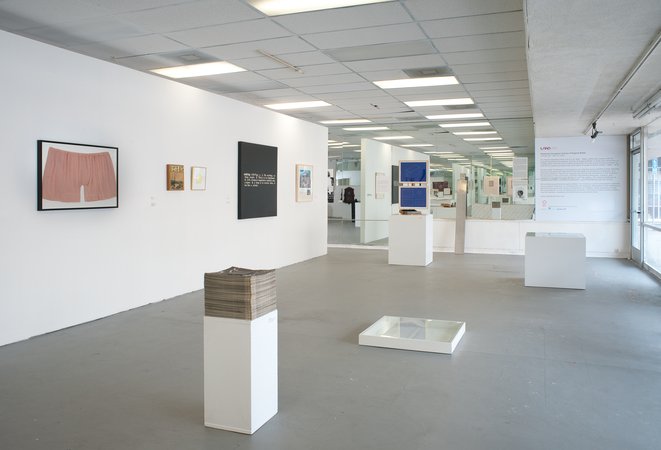
What are some of your proudest accomplishments from LAND?
I’d have to say the cross-country billboard project is one, because it’s such a major, ongoing endeavor. We collaborate with another organization in each place we work, and we really try to have openings or activations around that so as to not just be doing it from afar, but really thinking about where we are and what’s going on there.
The island in Miami was just a ridiculous feat of “getting it done” at a very early stage of the organization. It was during Art Basel 2010, which was only a year after we launched. We did a show with 18 commissioned projects on Flagler Memorial Island. We were only able to be there for one day—dawn to the next dawn. Of course we went to visit and prepped everything beforehand, but it was literally installed the day of, shown that afternoon until sunset, and deinstalled in the middle of the night. I’m amazed that anyone on the team still talks to me, because we really didn’t sleep for a week straight.
The person mostly responsible for that project is now my husband, if that indicates how much time we spent together. In any case, it was still a pretty beautiful experience. We made that a part of it, this idea of it being an ephemeral, one-time moment. The only problem was that you could only get there by boat, and of the 500 people that RSVP’d about 3,500 people showed up. That became a huge clusterfuck on the shore, but it wasn’t our fault. Not much we could do about that [laughs].
 Installation view, the island, Flagler Memorial Island, Miami, FL, December 3, 2010. Photo Courtesy of Billy Farrell Agency.
Installation view, the island, Flagler Memorial Island, Miami, FL, December 3, 2010. Photo Courtesy of Billy Farrell Agency.
Before LAND, you were a Whitney curator. What was it like to make that transition, from a major museum to a public-art not-for-profit?
I was at the Whitney from the time I graduated college until I moved to L.A. I got to be in three different administrations and a lot of different positions within the curatorial department—opportunities that I wouldn’t have expected, at least not that quickly. It was a great training ground.
I would say the core of our mission at LAND came from my experience working on the 2008 Biennial (with Henriette Huldisch, who is now the senior curator at the List Visual Arts Center at M.I.T..) A lot of the artists that we wanted to include worked in what we were then calling “expanded practice,” where all different types of artwork were equally important to them within the scope of their work. It just needed something other than a white cube. That didn’t work so well in the museum, so we took over the Park Avenue Armory. It was a pretty dramatic part of that Biennial, and it led to a lot of thinking about the LAND model for me.
As someone who has lived and worked in both New York and L.A., what do you see as the biggest differences between the two cities' art scenes?
The biggest difference for me is the geography. New York is so dense, and all the people and things you want to see are so concentrated. You naturally absorb things because you’re moving past them all the time. L.A. can be a lot more isolating. You have to make a huge effort to go and see and do things..
Another big difference is that New York has an extremely evolved art world—it’s been developing longer, and it’s large. L.A. has been very important over the course of this century, but it doesn’t have the same numbers. The community is much smaller, such that you’ll see John Baldessari at someone’s miniscule apartment event or some major trustee at some under the bridge activity that’s happening. I feel like a lot of the artists will prioritize going to their friends’ endeavor, whatever it may be, over some fancy event. I don’t think that happens as much in New York—you go to the proper things, and things feel a bit more hierarchical.

How has the L.A. art world evolved, in the years since you moved there?
Things have changed drastically in the five years since I’ve been here. A huge number of folks are moving in, and all the institutions are really paying attention to that growth.
The people that have been in L.A. for a long time say this happens every decade, that everyone says it’s going to be the next thing. I think it’s different if you look at the facts—the number of people, the number of organizations, the number of galleries, things like that that seem more tangible than just saying “it’s going to be the next big thing.” I hope it doesn’t get too big, because one of the great things about L.A. is its openness and that it isn’t totally codified.
















